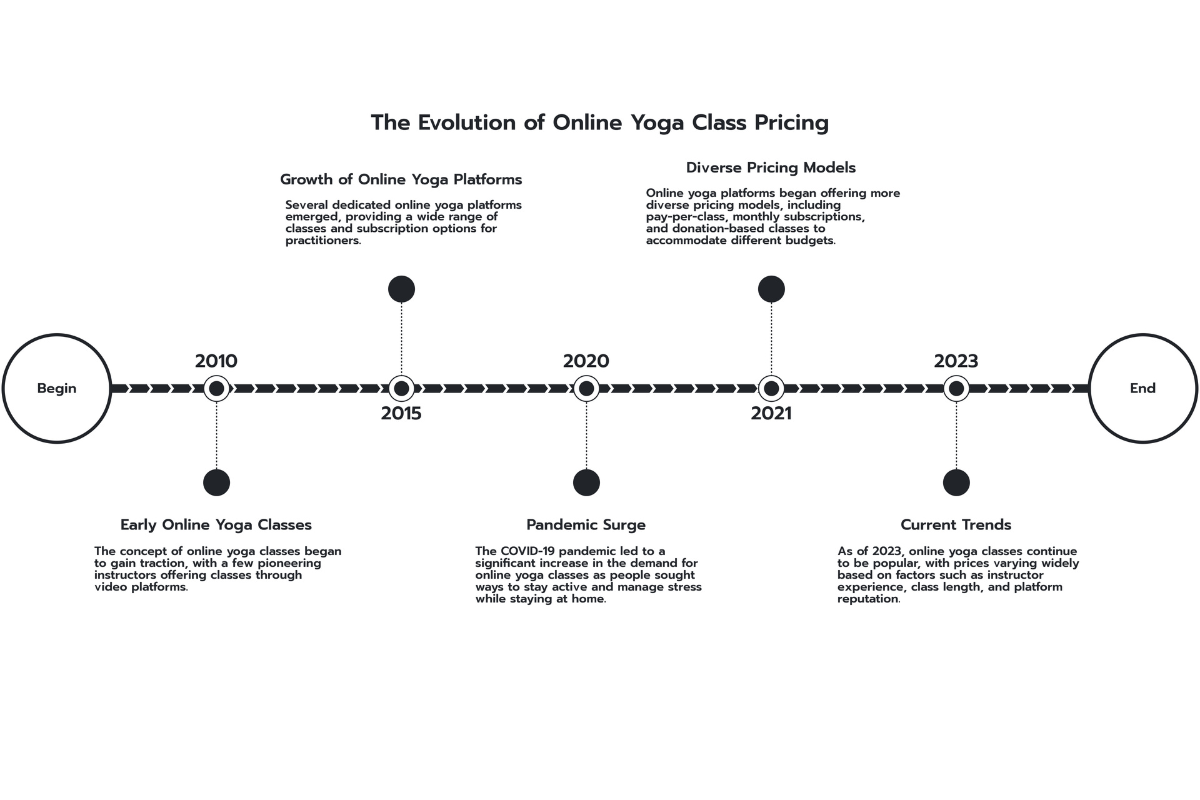How much is a Yoga class online and what should you charge?

An introduction to the personal side of pricing
When I first started offering online yoga classes, I constantly wondered: how much is a yoga class supposed to cost? Pricing felt more emotional than financial. I wasn’t just putting a number on my time—I was setting a value on my experience, the transformation I offered, and the accessibility I wanted to maintain.
Most online yoga classes are priced between $10 and $25 per session. Some teachers offer free classes to build experience, while others charge premium rates for specialized formats or private sessions.
Let’s break down what goes into that pricing, and how to find your number.
Also read >>> Top Mistakes Yoga Teachers Make
Key Takeaways on Yoga class pricing
- Flexibility is essential: Class price depends on your experience, the style you teach, and what extras you offer (like replays or resources).
- Value beyond the mat: Successful classes often include access to recordings, a supportive community, or additional materials.
- Know the market: Research what others are charging, especially in your niche.
- Cover your costs: Technology, music licensing, insurance—all of it adds up.
- Engagement matters: The more value students feel, the more they’ll support your work.
- Certifications build trust: If you’re Yoga Alliance certified or have advanced training, mention it. That justifies premium pricing.
What do most online Yoga classes cost?
In 2025, online group classes typically cost:
- $10–15 for beginner or group sessions
- $15–25 for intermediate or specialty formats (vinyasa, yin, prenatal)
- $30–60+ for private sessions (live, one-on-one)
Pricing varies by location, but global markets like the U.S., Canada, and Australia follow similar structures. If you’re wondering how much to charge for a Zoom yoga class, this range holds true—especially for live sessions with personal interaction.
Also read >>> 7 Best Online Yoga Classes
Choosing your pricing structure

There’s no one-size-fits-all. Choose a model that works for your lifestyle and students.
| Pricing Model | Benefits | Best For |
|---|---|---|
| Flat Rate | Easy to manage | Group classes |
| Sliding Scale | Improves access | Socially conscious studios |
| Packages | Encourages loyalty | Ongoing programs |
| Private Classes | Higher revenue per session | Advanced or therapeutic students |
| Donation-Based | Community building | Beginners, non-profits |
Pro Tip: Offer a “first class free” trial to build trust and convert browsers into loyal students.
What adds value to online Yoga?
• High-quality video/audio (Zoom, Logitech webcam, wireless mic)
• Session replays and pose breakdowns
• Access to a private community or Telegram group
• Bonuses like meditation guides, playlists, or journaling prompts
• Specialized sessions (e.g. yoga for athletes, seniors, or trauma healing)
• This kind of value adds up—both for your students and your bottom line.
Also Read >>> Brett Larkin’s 200 Hour Online Ytt Review
How your experience affects pricing
Your background can justify higher prices:
- Are you a certified 200- or 500-hour instructor?
- Do you have years of teaching in studios?
- Have you completed specialty trainings (prenatal, trauma-informed, etc.)?
Include this in your bio. Students want to pay for experience—they just need to know you have it.
The cost of running your Yoga business

Don’t forget to factor in:
- Equipment (camera, mat, lighting)
- Zoom or Vimeo subscriptions
- Website hosting
- Music licensing (yes, it matters!)
- Insurance and legal waivers
A $15 class sounds great—but it needs to support you too.
Keep adapting based on feedback

Pricing isn’t forever. Check in every 3–6 months:
- Are you getting repeat students?
- Are you covering costs comfortably?
- Are your classes overbooked (and it’s time to raise prices)?
Use tools like Google Forms or Typeform to gather feedback from your students about price sensitivity and perceived value.
Faq: top questions yoga teachers ask about pricing
How much should I charge for a beginner Zoom class?
Start at $10–15. Offer a sliding scale or donation option if you’re just starting.
Can I offer free online yoga and still build a business?
Yes—especially if you upsell recordings, courses, or private sessions.
What’s a fair price for private yoga lessons online?
Anywhere between $30 and $80, depending on your training and niche.
Do I need a certification to charge for online classes?
Legally, not always—but students look for credentials. If you’re Yoga Alliance certified, display it proudly.
Final thoughts: pricing with confidence and compassion
Your time, energy, and knowledge matter. When setting your rates, remember: you’re not just offering yoga—you’re offering transformation.
Find the number that feels fair, supports your work, and welcomes your community. Then stick to it with confidence.
FAQs
The charges for online yoga classes can vary widely depending on several factors, including the teacher, the class length, and any additional resources. Generally, prices range from as low as $5 to $30 per session.
More established instructors or those offering specialized classes (like prenatal yoga or advanced workshops) may charge more. Pricing flexibility allows you to attract a broader audience while valuing your expertise.
Deciding on a charge for a yoga class involves considering your experience, the class type, and the market. For example, beginners might be priced lower than advanced sessions. Researching local and online market rates can provide guidance.
A common strategy is to start at a moderate price point and adjust based on student feedback and market demand. Remember, your pricing strategy can evolve as you gain more experience and recognition.
Earnings from teaching yoga online depend heavily on the number of classes you teach, the number of students per class, and your pricing structure. Some teachers supplement their income with private sessions, which command higher fees.
Successful online yoga teachers who combine group classes, private sessions, and additional offerings like workshops can earn a substantial income. However, building a loyal student base and managing operational costs is crucial.
Zoom yoga class prices are generally in line with other online yoga classes. Teachers might charge anywhere from $5 to over $25 per class. Pricing often depends on class length, the teacher, and the exclusivity of the session (e.g., small group sizes for more personalized attention).
Offering classes through Zoom allows teachers to eliminate some overhead costs associated with physical locations, which can influence pricing strategies.




